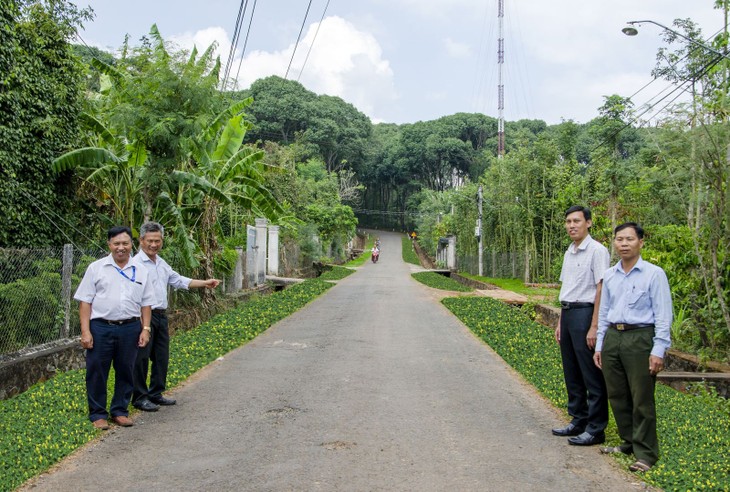(VOVWORLD) - A decade after the new-style rural building program began in Ba Ria-Vung Tau, the southern province is thriving and people's lives have improved in every aspect. This year Ba Ria-Vung Tau aims to have the remaining 6 communes of Chau Duc and Xuyen Moc district recognized as new-style rural villages.
 An aloe planting model in Chau Duc district, Ba Ria-Vung Tau province has brought in high income for local farmers. (Photo: baobariavungtau.com.vn) An aloe planting model in Chau Duc district, Ba Ria-Vung Tau province has brought in high income for local farmers. (Photo: baobariavungtau.com.vn) |
Over the past ten years, Ba Ria-Vung Tau has made great strides in new rural building, from raised awareness to concrete action, thanks to the involvement of the entire political system, the business community, and the consensus of the people.
Mach Quoc Cuong, a farmer of Long Dien district, says the program has drastically changed the locality’s rural landscape, with improvements in socio-economic infrastructure, people's income and living standards, and cultural and spiritual life.
“We are encouraged and have responded actively because the commune administration has led the new-style rural building in the right direction, meeting our aspirations and thoughts. We’ve greatly contributed to the process. Our living standard has obviously improved, giving us greater trust in the Party and State,” said Cuong.
Because the new-style rural development program aims to improve the material and spiritual life of rural people, local administrations are directed to help farmers stabilize and increase their income.
 All roads in Son Binh new-style rural commune in Chau Duc district have been paved. (Photo: baobariavungtau.com.vn) All roads in Son Binh new-style rural commune in Chau Duc district have been paved. (Photo: baobariavungtau.com.vn) |
The annual per capita income in new-style rural villages in Ba Ria-Vung Tau has reached 2,600 USD, double what it was in 2015.
Vu Ngoc Dang, Deputy Chief of the Office for New-Style Rural Development Coordination and Deputy Director of the provincial Rural Development Sub-Department, said, “Our target is to have all districts and towns meet the new-style rural standards by 2025. 38 communes will complete the advanced criteria and 8 to 12 communes will become role models, of which Dat Do and Long Dien districts will be role models in new-style rural building.”
Dang said Ba Ria-Vung Tau is restructuring agricultural production and trading of farm produce in the direction of high-tech agriculture and the establishment of cooperatives.
“Ba Ria-Vung Tau’s agricultural sector, coordination office, departments, and agencies will jointly outline plans that focus on increasing farmers’ income through organized production,” he said.
“We’ll detail the Prime Minister's directive to promote and link the consumption of agricultural products; provide policy advice on interest rate support for production and business households involved in new-style rural building and families engaged in household agriculture and fisheries businesses; and provide equipment and materials to agricultural cooperatives.”
After more than a decade of implementing the national target program on building new-style rural areas in Ba Ria-Vung Tau, the province’s rural areas have become greener, cleaner, and more beautiful, and people’s lives have significantly improved. This has made it easier to mobilize people to participate in their local socio-economic development activities.
The new-style rural building movement has spread throughout Ba Ria-Vung Tau province. Only a few communes in Chau Duc, Binh Chau, and Xuyen Moc district are left, but they, too, intend to complete their criteria this year.